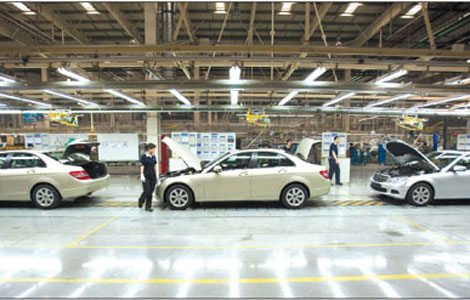Asia
Japan a robot power everywhere except at nuclear plant
Updated: 2011-03-17 22:25
(Agencies)
TOKYO - Japan may build robots to play the violin, run marathons and preside over weddings, but it has not deployed any of the machines to help repair its crippled reactors.
While robots are commonplace in the nuclear power industry, with EU engineers building one that can climb walls through radioactive fields, the electric power company running Japan's Fukushima Dai-ichi plant has not deployed any for the nuclear emergency.
Instead, its skeleton team has been given the unenviable and perhaps deadly task of cooling reactors and spent nuclear fuel on their own, only taking breaks to avoid over-exposure.
A science ministry official said a robot used to detect radiation levels is at the site of the accident in Fukushima, north of Tokyo, but nuclear safety agency official Hidehiko Nishiyama said: "We have no reports of any robots being used."
That robot would have come in handy early on Thursday when workers monitoring radiation had to back away from the plant because it was becoming too hot.
While Japan is renowned for its cutting edge technology, it also maintains an anachronistic element in its society that relies on humans for tasks that have given way to automation in many other parts of the world, such as operating elevators and warning motorists of road construction.
In one of Japan's worst nuclear accidents, two workers were killed in September 1999, when workers at a nuclear facility in Tokaimura, northeast of Tokyo, set off an uncontrolled nuclear chain reaction by using buckets to mix nuclear fuel in a lab.
Japan is a world leader in robots, using them to automate the most complicated manufacturing processes and to sift through rubble to look for victims in earthquakes.
Robots were also used after two infamous nuclear disasters -- Three Mile Island and Chernobyl, and will almost certainly be used at Fukushima for work in highly radioactive areas.
Kim Seungho, a nuclear official who engineered robots for South Korea's atomic power plants, said: "You have to design emergency robots for plants when they are being built so they can navigate corridors, steps and close valves."
The Fukushima plant was built in the 1970s, well before robots were able to work on sophisticated tasks.
Robots are in place in many nuclear plants for structured situations such as monitoring pipes and simple maintenance.
Kim, a deputy director in nuclear technology for the Korea Atomic Energy Research Institute, said budget constraints and denial have kept emergency robots out of many plants in his country and around the world.
"Nuclear plant operators don't liked to think about serious situations that are beyond human control," he said by telephone.
E-paper

Factory fever
Despite auto manufacturing bubble scare, car giants gear up expansion of factories.
Preview of the coming issue
Dressed for success
Fabric of change
Specials

Earthquake Hits Japan
A massive 8.8 magnitude quake hit the northeast coast of Japan on March 11,2011.

NPC & CPPCC sessions
Lawmakers and political advisers gather in Beijing to discuss major issues.

Slide: Japan quake
Devastating earthquake and tsunami left millions without water, electricity, homes or heat.
